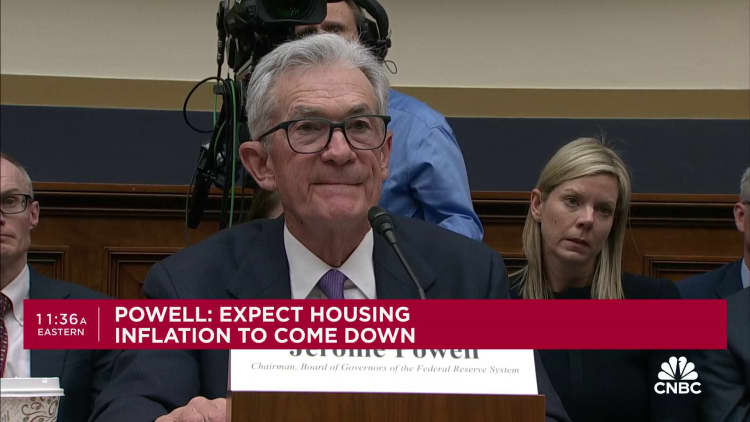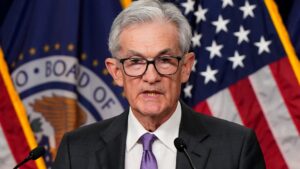
Customers shop at a Costco store on August 31, 2023 in Novato, California. According to a report from the Commerce Department, consumer spending grew 0.8% in July, exceeding expectations of 0.7%. (Photo by Justin Sullivan/Getty Images)
Justin Sullivan | Getty Images News | Getty Images
A survey from the New York Federal Reserve Bank on Monday showed consumers are increasingly skeptical that the central bank will be able to achieve its inflation target anytime soon.
While the outlook for next year remains unchanged at 3%, that is not the case in the longer term. The three-year forecast rose 0.3 percentage points to 2.7%, and the five-year forecast rose even more, rising 0.4 percentage points to 2.9%.
All three indicators are well above the Fed’s 12-month inflation target of 2%, suggesting the central bank may need to maintain tightening policy for longer. Economists and policymakers consider expectations a key factor in looking at the path of inflation, so the February consumer expectations survey could be bad news.
“Extensive surveys of households, businesses and forecasters, as well as financial market measures, indicate that long-term inflation expectations remain well anchored,” Federal Reserve Chairman Powell said in testimony on Capitol Hill last week. “We remain committed to our goal of reducing inflation to 2% and maintaining good stability in long-term inflation expectations.”

Overall inflation, measured by personal consumption expenditures, the Fed’s preferred indicator, rose 2.4% in January. Excluding food and energy, core inflation was 2.8%. The data represent progress in the Fed’s battle, even as some economists warn that the “last mile” back to 2% will be the most difficult.
The Fed is expected to keep interest rates unchanged at next week’s meeting, with market pricing pointing to a rate cut in June, followed by three more rate cuts before the end of the year, according to CME Group’s measure of the futures market.
Other inflation measures in the February survey offered some hope.
Most notably, the rental cost outlook fell to 6.1%, down 0.3 percentage points and the lowest reading since December 2020. Housing remains the most stubborn factor in inflation, but Fed officials believe housing costs will ease over time as tenants negotiate new leases.
Elsewhere, the one-year forecast for natural gas rose 0.1 percentage point to 4.3%, the one-year forecast for health care fell 1.8 percentage points to 6.8%, and the one-year forecast for food remained unchanged at 4.9%. The outlook for household spending growth next year rose by 0.2 percentage points to 5.2%.
Respondents also expressed some anxiety about their employment prospects. The perceived probability of unemployment next year rose to 14.5%, an increase of 2.7 percentage points.








